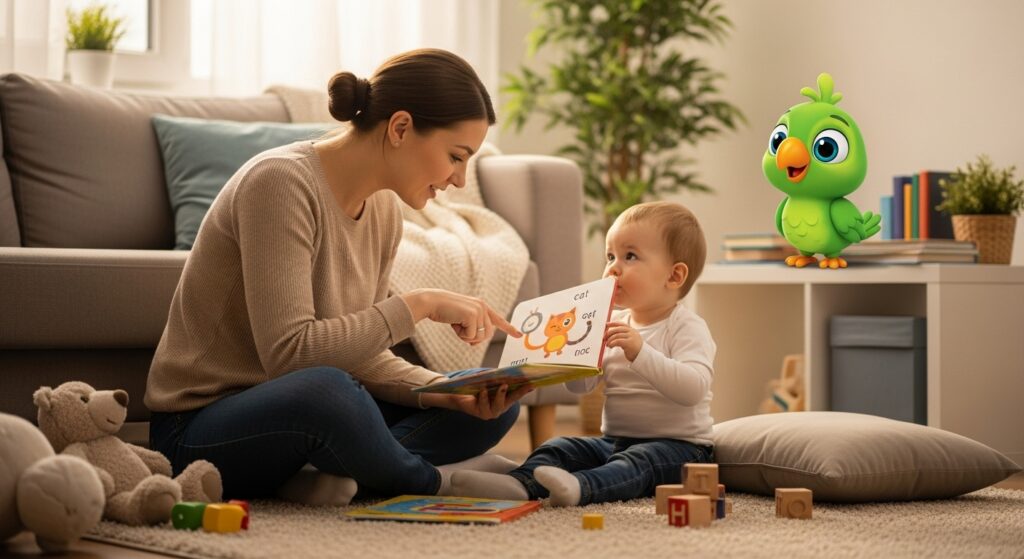Creating a Language-Rich Bedtime Routine
Bedtime is more than just a nightly ritual to wind down; it’s a golden opportunity to enrich your child’s language development. As toddlers explore their world, their ability to communicate grows rapidly. Integrating language-building activities into your evening routine can be both enjoyable and beneficial for your little one’s linguistic journey.
The Importance of Language Exposure
Language exposure is crucial during the toddler years as it lays the foundation for future communication skills. Engaging in activities that promote vocabulary expansion and comprehension can help children articulate their thoughts more effectively. By turning bedtime into a language-rich environment, parents can nurture these skills naturally.
Start with Storytelling
One of the most effective ways to enhance language skills is storytelling. Reading to your child every night not only boosts their vocabulary but also stimulates their imagination and listening abilities.
- Choose Diverse Books: Select books with a variety of themes and vocabulary. Picture books, rhyming stories, and tales with repetitive phrases are excellent choices. They introduce new words and concepts in an engaging manner.
- Interactive Reading: Encourage your toddler to participate by asking open-ended questions about the story. This interaction helps improve comprehension and critical thinking. For example, “What do you think will happen next?” or “Why do you think the character is sad?”
- Create Your Own Stories: Invent stories together. Allow your child to add characters or plot twists. This activity enhances creativity and gives them a sense of ownership in the storytelling process.
Sing and Rhyme
Music and rhymes are powerful tools for language development. They improve phonemic awareness, which is essential for reading skills.
- Sing Lullabies: Traditional lullabies and nursery rhymes not only soothe but also introduce rhythm and repetitive structures. Encourage your child to sing along, even if it’s just a few words.
- Create New Rhymes: Make up silly rhymes together. This fun activity encourages play with language and helps your child understand sound patterns and rhyming words.
Engage in Conversation
Bedtime is an ideal time for meaningful conversations. Discussing daily events and feelings helps children learn to express themselves more clearly.
- Reflect on the Day: Ask your child about their day. For example, “What was your favorite part of today?” or “Did anything make you laugh?” This practice helps them recount events and express emotions.
- Future Plans: Talk about what tomorrow might bring. Discuss planned activities or events, helping your child understand the concept of time and anticipate future experiences.
Incorporate Playful Learning
Games and playful activities can make language learning a fun and natural part of the bedtime routine.
- Word Games: Simple games like “I Spy” can be adapted to a nighttime setting. Focus on objects in the bedroom or things seen during the day. This encourages observational skills and vocabulary recall.
- Role Play: Pretend play scenarios allow toddlers to experiment with language in a safe and supportive environment. Act out scenes from their favorite stories or create new adventures together.
Foster a Bilingual Environment
For families in bilingual households, bedtime can be an opportunity to introduce a second language naturally.
- Alternate Languages: Read or tell stories in both languages. This exposure helps children associate words with meanings across languages and builds a strong foundation for bilingualism.
- Language Games: Play simple naming or matching games using both languages to reinforce vocabulary in a fun, engaging way.
Use Technology Wisely
While traditional methods are highly effective, technology can also play a role in language development if used mindfully.
- Educational Apps: Select age-appropriate language apps that promote reading and vocabulary skills. Limit screen time and ensure that any app used is interactive and encourages active participation.
- Audio Books: Listening to stories can be a soothing way to wind down. Choose audio books with expressive narration to keep your child engaged and to introduce them to new words and storytelling techniques.
Consistency is Key
Consistency in your bedtime routine helps your child know what to expect, creating a calming environment conducive to learning.
- Set a Regular Schedule: Establish a consistent bedtime that allows for adequate rest and relaxation. A predictable routine helps children feel secure and more open to learning.
- Be Patient and Positive: Celebrate small milestones in language development and encourage progress with positive reinforcement. Patience and encouragement go a long way in building your child’s confidence.
Conclusion
By incorporating these strategies into your child’s bedtime routine, you are setting the stage for successful language development. Each night becomes an opportunity to bond, learn, and grow together. Remember, the goal is to make language-building a natural and enjoyable part of your child’s life. With time and consistency, you’ll witness remarkable progress in their ability to communicate and express themselves. Rest assured, your efforts will pay off, as these early language experiences will serve as the building blocks for your child’s future learning and communication skills.

